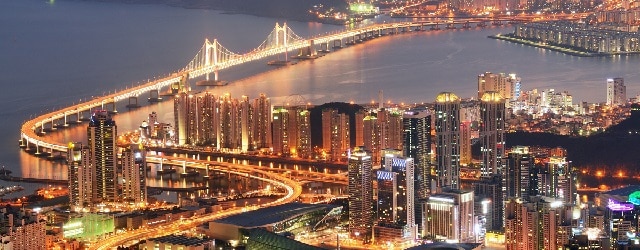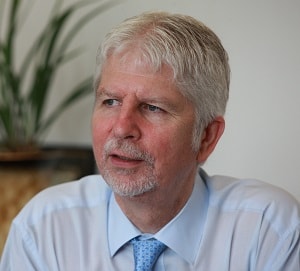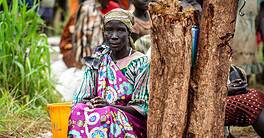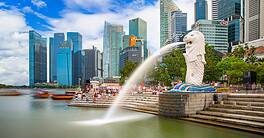South Korea rose impressively to meet the COVID-19 challenge. Will it be able to reinvigorate its economy as well?

“Severe challenges can have a unifying effect,” says Peter Underwood, a lifelong resident of Korea and the chairman of IRC Consulting, which helps Western companies establish a presence in Korea. “The Blue House [the official residence of South Korea’s democratically elected president] has won praise both here and abroad for its handling of the COVID-19 virus.”
Among the first countries to implement a drive-through COVID-19 testing center, South Korea boasts a well-functioning virus-contact tracing system that was recently acclaimed by the World Health Organization (WHO). South Korea is one of only two countries with large outbreaks (the other being China), to flatten the curve of new infections, “and it has done so without China’s draconian restrictions on speech and movement, or economically damaging lockdowns like those in Europe and the United States,” WHO analysts noted in a report.
Asia’s fourth-largest economy may appear beset by challenges that threaten both its growth and stability, including an aggressive China. Yet, “Korea is democratic, stable, fairly transparent and has significant scale,” Underwood says. “Growth prospects remain good and we see major opportunities for foreign investors.”
Like Singapore, its tiny neighbour to the south, South Korea is winning widespread admiration for keeping the contagion in check following an exemplary series of policy responses. Having apparently neutralized the virus, Seoul has promptly introduced its biggest fiscal stimulus program since the 2009 financial crisis, and “there is no doubt that expectations have switched from gloomy to positive,” Underwood says.
Rapid Growth From 1960
South Korea rose from poverty and dictatorship in the 1960s to become a high-tech industrial powerhouse with a trillion-dollar economy, playing a critical role in global industries like semiconductors, smartphones and flat-panel TVs.
 Won, Orbis Communications: Korea certainly has challenges, but it also has many advantages. |
South Korea’s per capita income, nearly $30,000, is roughly equivalent to that of Italy or Spain. But its 51 million people now face conditions common to developed nations, such as slower growth rates, an aging population and rising competition from China. For President Moon Jae-in, other hurdles include a low birth rate, low worker productivity, and the need to accelerate a structural shift away from overreliance on export-led growth.
“Korea certainly has challenges,” says Sophie Won, co-founder of Orbis Communications in Seoul, “but it also has many advantages.” She cites its well-educated workforce and strong work ethic, and points out that there is a powerful industrial base with a sterling export record and some of the world’s leading technology companies.
Jason Song, formerly in-house counsel for Lehman and Nomura who now specializes in regulatory affairs at a leading Korean law firm, freely admits that succeeding in Korea can be tough for foreign institutions. He cites red-tape, complex labor regulations and a history of cozy relationships between banks and the chaebols (family-owned conglomerates) that have long dominated the economy.
“It has always been difficult for foreign financial institutions to manage labor laws and other regulations. Generally, these restrict flexibility in hiring and impede innovation,” he says. “Our tough labor laws seem unlikely to change anytime soon, and this—plus a very soft market—has caused foreign financial institutions to demur.”
Song acknowledges that a slew of recent government measures, including aggressive stimulus, may be significantly shifting sentiment both at home and abroad. He speculates that a common challenge—COVID-19—may have rallied policymakers and public sentiment toward change and deregulation.
Government Challenges
Moon moved into the Blue House in May 2017 following the impeachment of previous incumbent Park Geun-hye for corruption. Moon’s administration has significantly increased intervention in the economy, with measures to alleviate household debt and increases in both corporate and personal tax rates. The minimum wage has also been increased.
Song says there has been frustration with the government, and that the older generation who endured hardship to build Korea fears that Moon is unfriendly to the economy and too interested in grandstanding. They cite his as-yet unproductive efforts to seek a détente with North Korea by promising a resumption of “economic benefits” to reduce tensions on the peninsula and woo the country’s fractious president, Kim Jong-un.
Two relatively scandal-free years ended with Moon’s appointment of Justice Minister Cho Kuk, whose wife was indicted in September 2019 for forging an academic award for her daughter’s medical school application. “Recent events have driven this scandal from the front pages, and there is now widespread pro-government sentiment and a new sense of unity,” concludes Song.
Economy and Fiscal Stimulus
Pre-virus, exports had fallen for 13 consecutive months to January 2020. Corporate investment and private consumption remained sluggish, despite the government’s approval of an additional 5.83 trillion won ($4.8 billion) budget in August 2019 and its announcement of a series of measures to spur domestic consumption and support small and medium-size companies.
 Underwood, IRC Consulting: South Korea |
The Blue House launched its first stimulus program in 2017. It has now drawn up a record spending plan for 2020, up 8% from 2019, in order to “create jobs, increase welfare payments and up spending on research and development.”
A further stimulus package of 11.7 trillion won was announced on March 3rd to cushion the impact of the largest outbreak of COVID-19 outside China, as efforts to contain the disease triggered supply disruptions and damaged domestic consumption. Finance Minister Hong Nam-ki, referring to the COVID-19, said the supplementary budget would channel money to the health system, childcare and outdoor markets.
“We are putting all our policy focus on minimizing the economic fallout, especially for the vulnerable sectors, small- to medium-size businesses and self-employed people,” Hong told a news conference, in a speech that was received well at home and widely cited as an early example of pragmatic public policy in the face of the COVID-19 outbreak.
Tariffs and Trade
Nearly 40% of South Korea’s outbound shipments go to the US and China. In order to prepare for a new post-trade-war world and the restructuring of global supply chains, South Korea is embracing Vietnam and is moving more of its factories and manufacturing away from China and into Vietnam. This is likely to help growth in the medium term, and many analysts see it as a prudent decoupling from China and an indication of a practical trade policy that can diversify risk and diminish the future impact of trade spats.
In a significant move, LG Electronics last month announced it would stop producing smartphones in South Korea and move manufacturing to Vietnam. Samsung has invested $17.3 billion in eight factories and one R&D center there, turning Vietnam into its largest smartphone production base.
A longstanding spat with Japan, its former colonial ruler, worsened in late 2018 when South Korea’s Supreme Court ruled that Japanese companies must compensate a group of South Koreans who were forced to work for them during Japan’s occupation. Japan argues that all such claims were settled by a 1965 treaty.
At the end of 2019, nearly seven in 10 Japanese said they supported the tech trade restrictions slapped on Seoul, and more than half of South Koreans approved of how Moon’s administration was dealing with Japan. Meanwhile, in August 2019, the trade war had spilled over into security, as Seoul announced that it would not renew an intelligence-sharing pact with Tokyo, to the dismay of the US.
That may prove to have been the low point in the long-running dispute between the nations. Analysts point to a series of recent exchanges between the governments—both of them now beleaguered by more-pressing concerns—which suggest that cooler heads are starting to prevail, and that stability and growth will reassert themselves as central policy concerns.
Economists remain cautious about South Korea’s 2020 growth outlook, although they broadly welcome the government’s policy interventions. They point to a further need to internationalize the economy by floating the won, and the long-unaddressed need to cut excessive rules and regulations.
Economists and technocrats alike believe South Korea might need another economic overhaul like the one following the IMF bailout in the late-1990s. But they see recent events as having a positive impact on policy, and expect a “new realism” in deregulation and stimulus.
Underwood says the overall trajectory is still positive, “We see major opportunities in industrial and consumer markets. Given Korea’s size, anyone supplying to automotive, shipbuilding or semiconductors has got to be here.”
“Foreign investors can hire from a pool of highly-educated Koreans,” Won adds. “Cities are safe, the signs are that the worst of the virus is past—and the food is addictive!”



